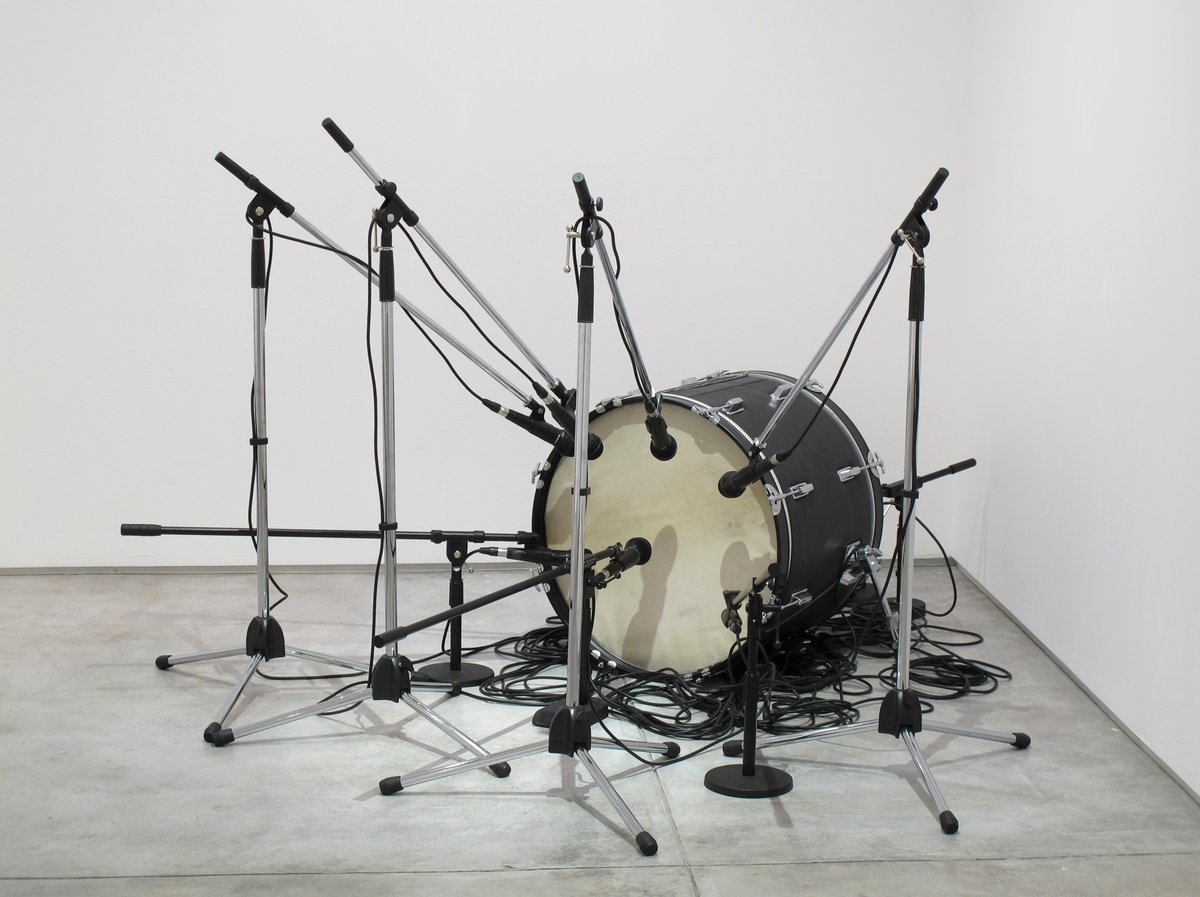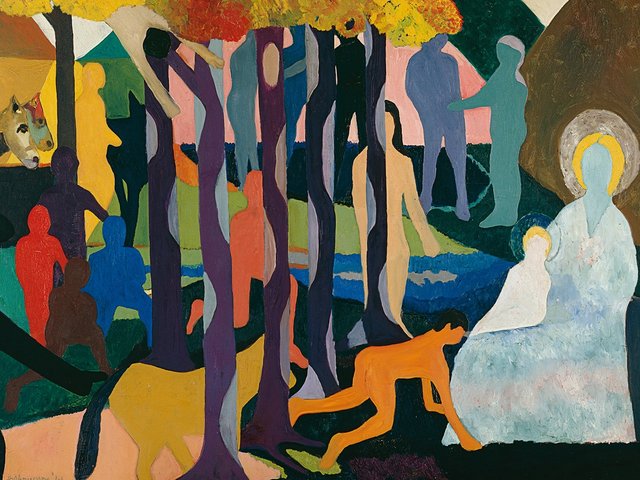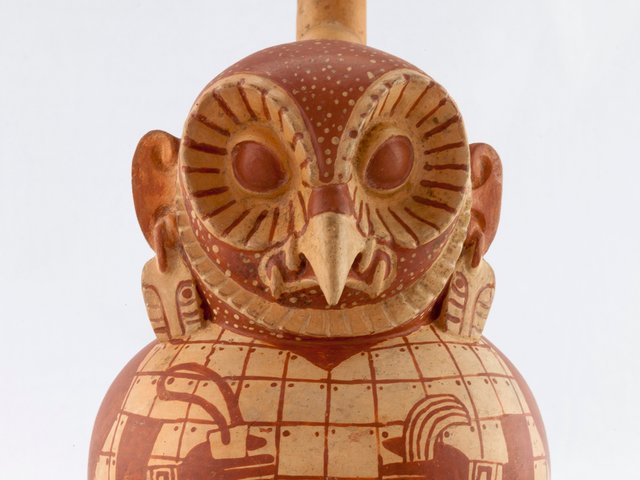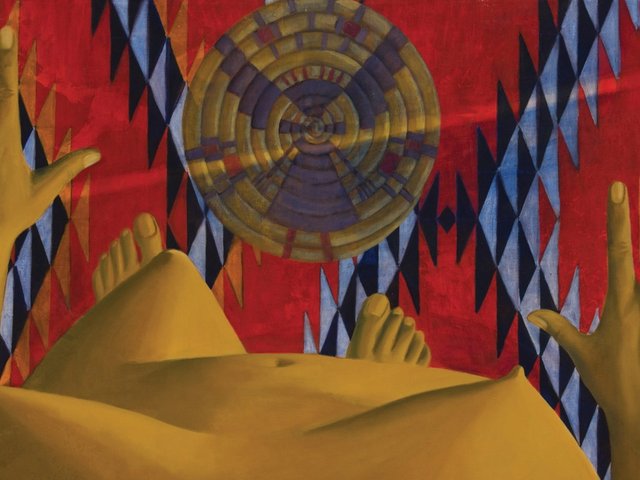Alice Coltrane, Monument Eternal
Hammer Museum
UNTIL 4 MAY
“When I listen to her music, I feel like I’m being healed at a cellular level,” the curator Erin Christovale says of the late Alice Coltrane (1937-2007). This fortifying power looms large in the legacy of Coltrane, who became both a pioneer of spirituality-driven jazz and a devotional leader in the Vedic faith. It has also made her a touchstone for influential artists across disciplines in this turbulent era, as an exhibition organised by Christovale at the Hammer Museum underscores.
Alice Coltrane, Monument Eternal unites the work of 19 contemporary artists—around half of it made specifically for the show, Christovale says—with Coltrane’s handwritten sheet music, unreleased audio recordings and rarely seen video footage of Eternity’s Pillar, a television series she produced and hosted on a Los Angeles public-access channel in the 1980s. Much of this material tracks Coltrane’s creative and spiritual evolution after her husband and collaborator, the jazz giant John Coltrane, died of liver cancer at the age of 40 in 1967.
Although Alice was “going through immeasurable grief and mourning” in the aftermath, Christovale tells The Art Newspaper, “all these major epiphanies about how she wants to move forward, who she wants to be and, most importantly, how she wants her craft of music to sound all fall into place”.
Coltrane became an increasingly influential figure in the male- dominated jazz scene as she pushed her mastery of the piano and harp beyond the borders of genre in the 1970s. Yet, over time, she turned more of her focus in music and life to Vedism, a proto-Hinduist religion. Coltrane founded and began overseeing the Sai Anantam Ashram, a 48-acre campus in the Santa Monica Mountains, in 1983; it carried on for a decade after her death, closing in 2017.
Monument Eternal is part of The Year of Alice, a multi-city programme of events celebrating Coltrane’s work across 2024-25. To develop the show, Christovale sought out an intergenerational, coast- to-coast cross-section of Black American artists who engage with the multifaceted legacy of Black American music, inventively incorporate sound or have made pieces referencing Coltrane herself.
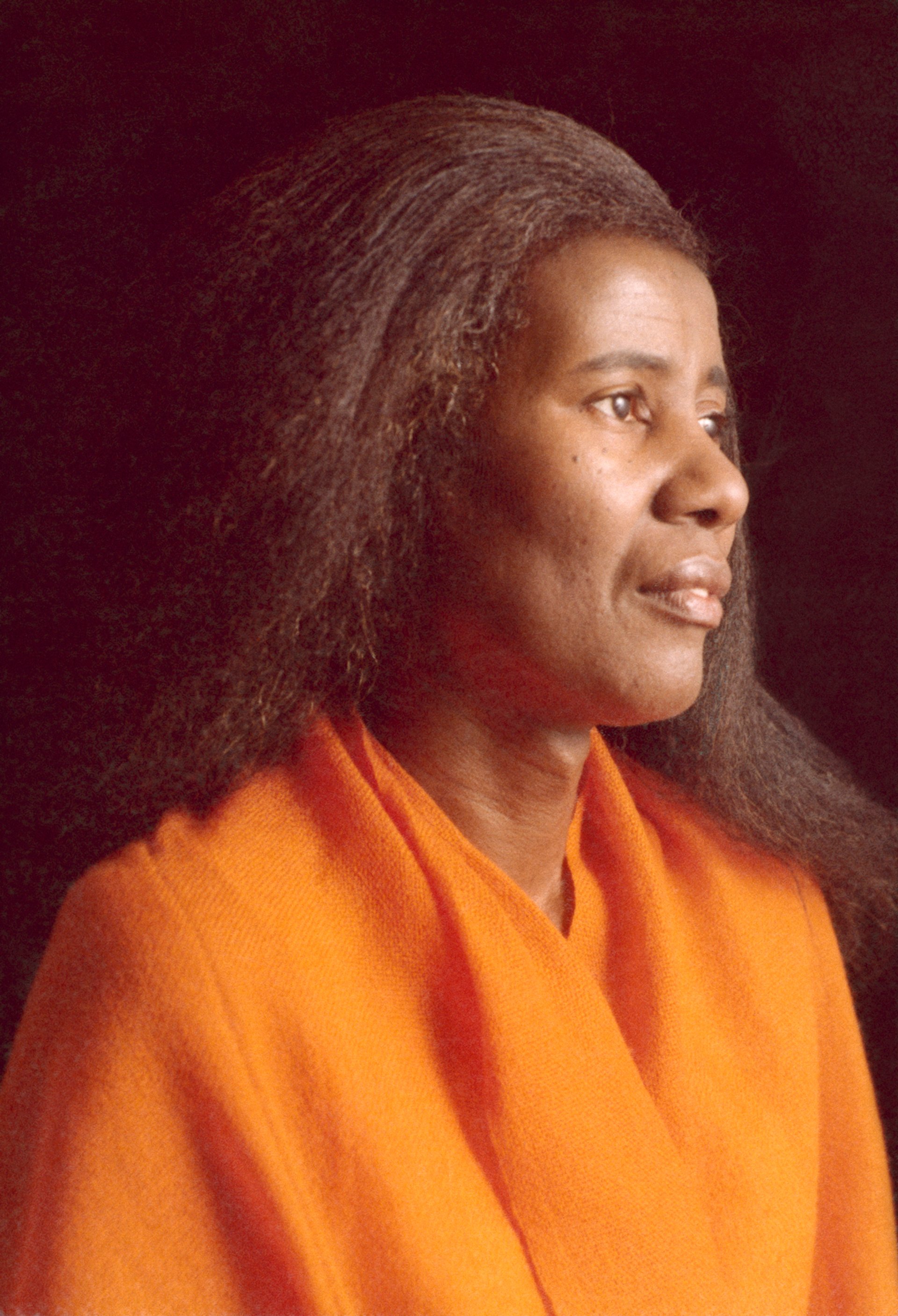
Alice Coltrane became an influential musician and spiritual leader after the untimely death of her husband, John
Courtesy of The John & Alice Coltrane Home
‘A spiritual revelation’
Rashid Johnson, who says he is a “huge Alice Coltrane fan”, qualifies by multiple criteria. He recalls bumping into Christovale at a fundraiser connected to Coltrane that “wasn’t an event where art people were, necessarily,” he says. “I shared with her at that event a work I’d made that included an album of Alice’s. Like any good curator, she kept that in her memory.”
That piece, Gotta Match (2014), hails from a body of wall sculptures that Johnson calls Islands. Each is an irregular armature of red-oak flooring—partially burned by the artist, spray-painted and burned again—with jutting shelves displaying signifiers of Black heritage, including shea butter, black soap and vintage vinyl records. At the centre of Gotta Match is Coltrane’s 1971 album Journey in Satchidananda, which Johnson calls “a spiritual revelation”.
The artist Bethany Collins, who uses language, text and musical scores to examine racial tensions throughout American history, contributed one of the show’s new works. It comprises a set of ten drawings. Each depicts a musical score that blends Coltrane’s rendition of Williams Arms Fisher’s 1922 song Goin’ Home—which uses the 19th-century composer Antonín Dvořák’s shape-shifting melody from his New World Symphony—with a different progressively minded contrafactum (a composition that substitutes new lyrics over a pre- existing melody) of the American standard Battle Hymn of the Republic. Atop the scores are plumes of charcoal, alluding to the country’s violent past and present.
“I wanted to marry the two [songs], because both are about resisting paralysis and stasis, about forward movement and what endurance requires of us,” Collins says. Asked what she hopes visitors take away from Monument Eternal amid the polycrisis of 2025, she adds: “In making the work, the resonance I found with Alice was in a belief in repetition as a path towards transformation—she might say ‘transcendence’. I felt akin to her in that, and I hope others will too.”


